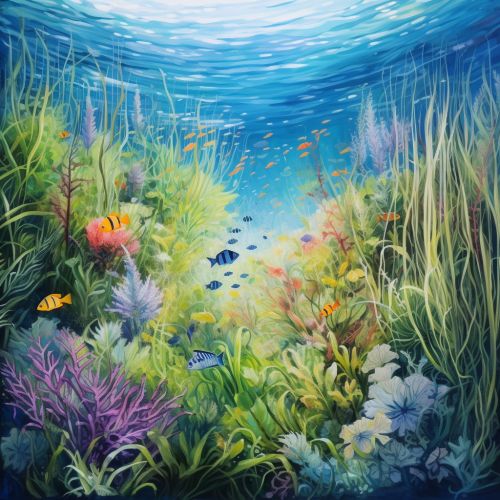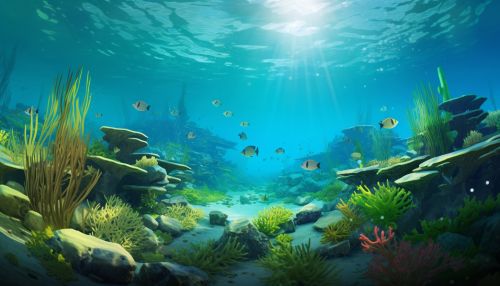Blue carbon
Overview
Blue carbon refers to the carbon captured by the world's oceanic and coastal ecosystems. These ecosystems, which include mangroves, salt marshes, seagrasses, and potentially others, are a significant sink for atmospheric carbon dioxide (CO2). The term "blue carbon" was first used in 2009 to describe the carbon captured by the marine ecosystems, and it is now recognized as an important part of the global carbon cycle.


Carbon Sequestration
Blue carbon ecosystems play a crucial role in the global carbon cycle by sequestering carbon dioxide from the atmosphere and storing it in plant tissues and sediments. This process, known as carbon sequestration, is a natural way of mitigating climate change by reducing the amount of CO2 in the atmosphere.
Blue Carbon Ecosystems
Mangroves
mangroves are one of the most carbon-rich ecosystems on the planet. They are capable of storing up to four times more carbon per unit area than terrestrial forests. This is due to their ability to trap and store carbon in their dense root systems and surrounding sediments.
Salt Marshes
Salt marshes are coastal wetlands that are flooded and drained by salt water brought in by the tides. They are highly productive ecosystems that capture and store significant amounts of carbon in their plant tissues and sediments.
Seagrasses
Seagrasses are flowering plants that form extensive underwater meadows. They are highly efficient at capturing and storing carbon. In fact, although they cover less than 0.2% of the ocean floor, they are responsible for up to 10% of the carbon stored in ocean sediments.
Threats to Blue Carbon Ecosystems
Blue carbon ecosystems are under threat from a variety of human activities, including coastal development, pollution, and climate change. The destruction of these ecosystems not only results in the loss of the valuable ecosystem services they provide, but also in the release of the significant amounts of carbon they store, contributing to global warming.
Conservation and Restoration
The conservation and restoration of blue carbon ecosystems are recognized as important strategies in the fight against climate change. Efforts are being made globally to protect existing blue carbon ecosystems and restore degraded ones. These efforts not only help to mitigate climate change, but also provide a range of other benefits, such as biodiversity conservation and coastal protection.
